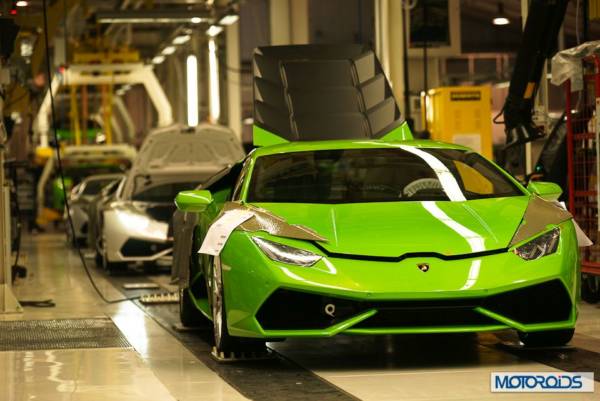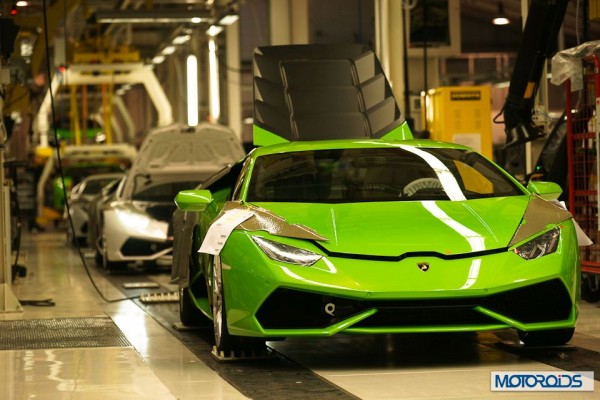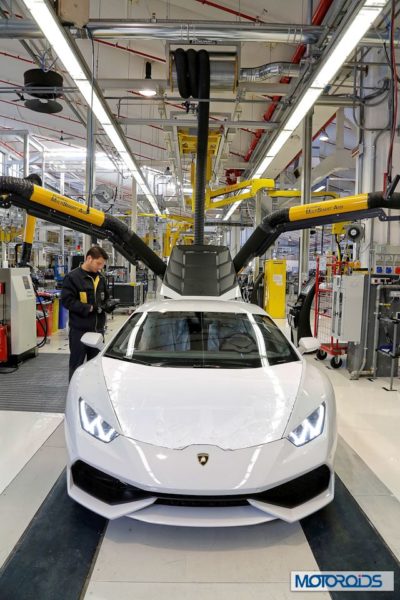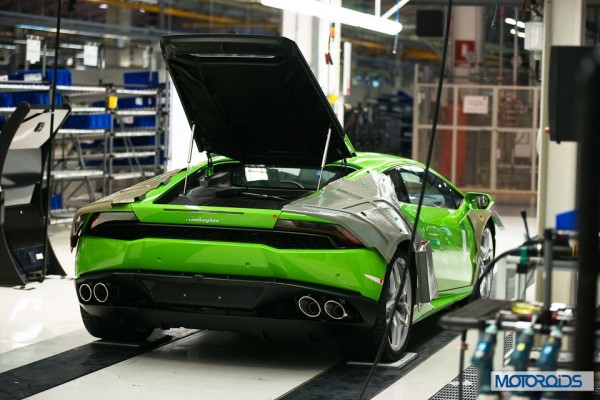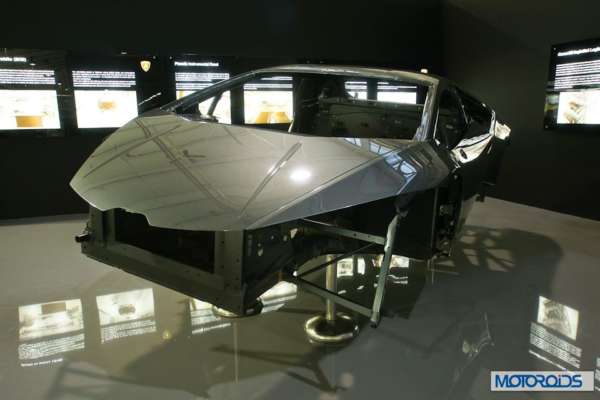We visit Lamborghini plant at Sant’ Agata Bolognese village and follow the production line of the brand new Huracan. Let’s see how is the newest “baby” Lamborghini manufactured…
by Akis Temperidis
Follow Akis at (twitter.com/theworldoffroad)
Sant’ Agata would be an ordinary village at the Po river valley if it was not the birthplace of Lamborghini supercars. The factory was built here by Ferruccio in 1963 – an inspired entrepreneur who was constructing tractors – transformed a purely agricultural region to a destination of pilgrimage for petrolheads from around the world.
Right on the entrance of the village there is an informative sign “Sant’ Agata – Citta’ di Lamborghini”, that prepares for what is about to come after 500 metres. The factory address is on No 12 of Via Modena, the national road that connects Bologna and Modena. As long as you arrive there you simply can’t overlook the factory on the roadside. On the opposite side of the road there is Bull Bar, the only Lambo bar with a rental service in Italy. You can sip your espresso here and then decide whether you like to have a 10 minute ride in the Gallardo or the Aventador parked outside.
The new glass building was built after Lamborghini became an Audi subsidiary. It hosts the HQ and the museum, one of the first in the world you can visit virtually thanks to Google Maps Street View. On the right hand there is the refurbished factory and on the back the carbon fibre manufacturing unit, where the supernatural fabric is processed for the chassis construction of Aventador and Huracan models.
Sara Bertusi, a young Italian who works for the Press Office, welcomes me at the reception, where every day you can find Lambo aficionados on a tour from all over the world. She takes me for a first visit around the museum – where I can see and touch two dreams from my childhood, Miura and Countach – and then takes me back to the production line. When I ask her whether we will visit the carbon fibre unit, she tell me that it isn’t organized for the moment but Sara promises that we can visit the facility in the near future.
Inside the factory the environment is very clean, well lit and extremely organised. Noise is reduced so that you can actually hear the guys with the black t-shirts talking to each other. There are two separate production lines: one for the Huracan with 23 stations and one for the Aventador with 11 stations.
The manufacturing process for each model is different. Aventador chassis and body is made by carbon fibre and aluminium is used only for the engine support frame and the frontal passive safety zones. Huracan chassis is a hybrid construction where CFRP (Carbon Fibre Resin Polymer) is used only as a backbone for the aluminium chassis and body. Aventador chassis is completely constructed in house – that for the Huracan is coming from a “carozziere”, an exterior chassis builder.
Huracan V10 engine is built by Audi and arrives complete to Sant’ Agata – a technical fact that would be advertised by any other manufacturer in the world but not by Lamborghini. We can understand that in Sant’ Agata people don’t digest well the “made in Germany” idea for their cars. The V12 state of the art Aventador engine is assembled inside the Italian factory though. It is a ritual of craftsmanship followed by highly specialised employees.
Generally speaking the Huracan line is more automated. It was inaugurated in November 2013 and today it produces 8 cars a day. The line capability is for 11 cars per day. On each station, the body of the car stays for 60-67 minutes. According to the orders from international markets, this interval can be minimized accordingly. Three 8 hour shifts (three working days in other words) pass from the moment a Huracan body enters the line to the moment it gets our as a complete car from station 23
Next for the complete step by step visualization of the making of the Lamborghini Huracan>>>

